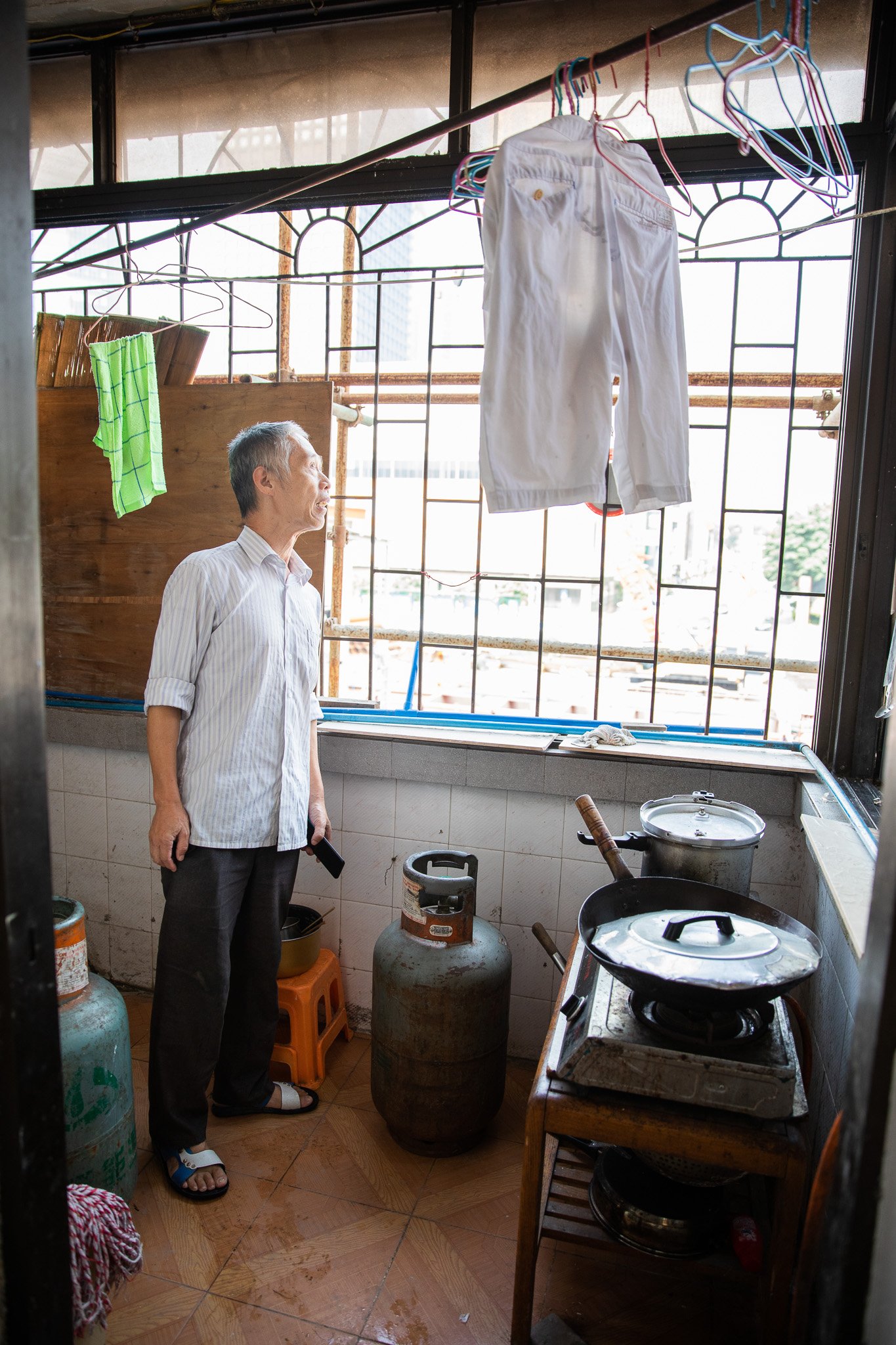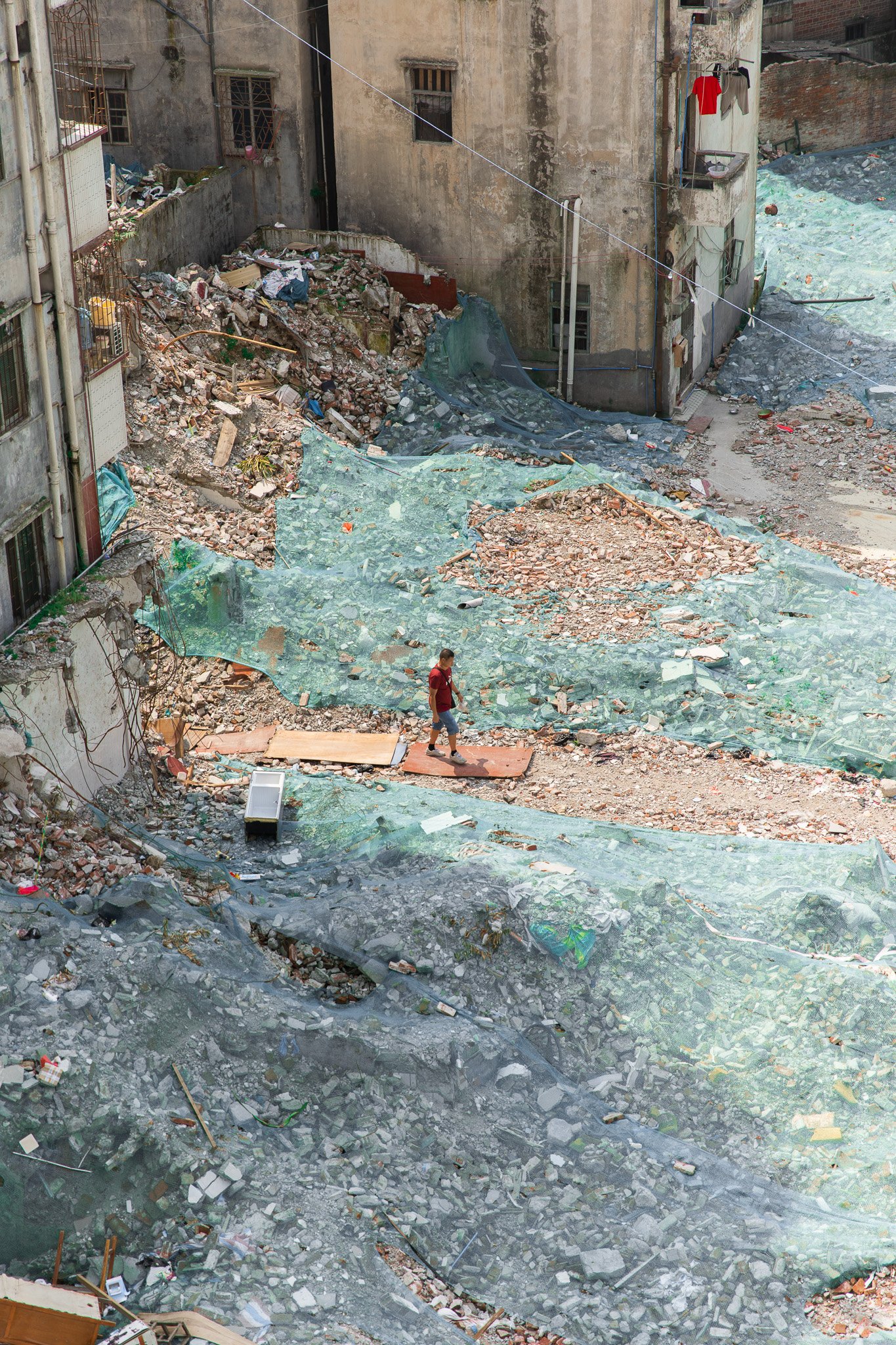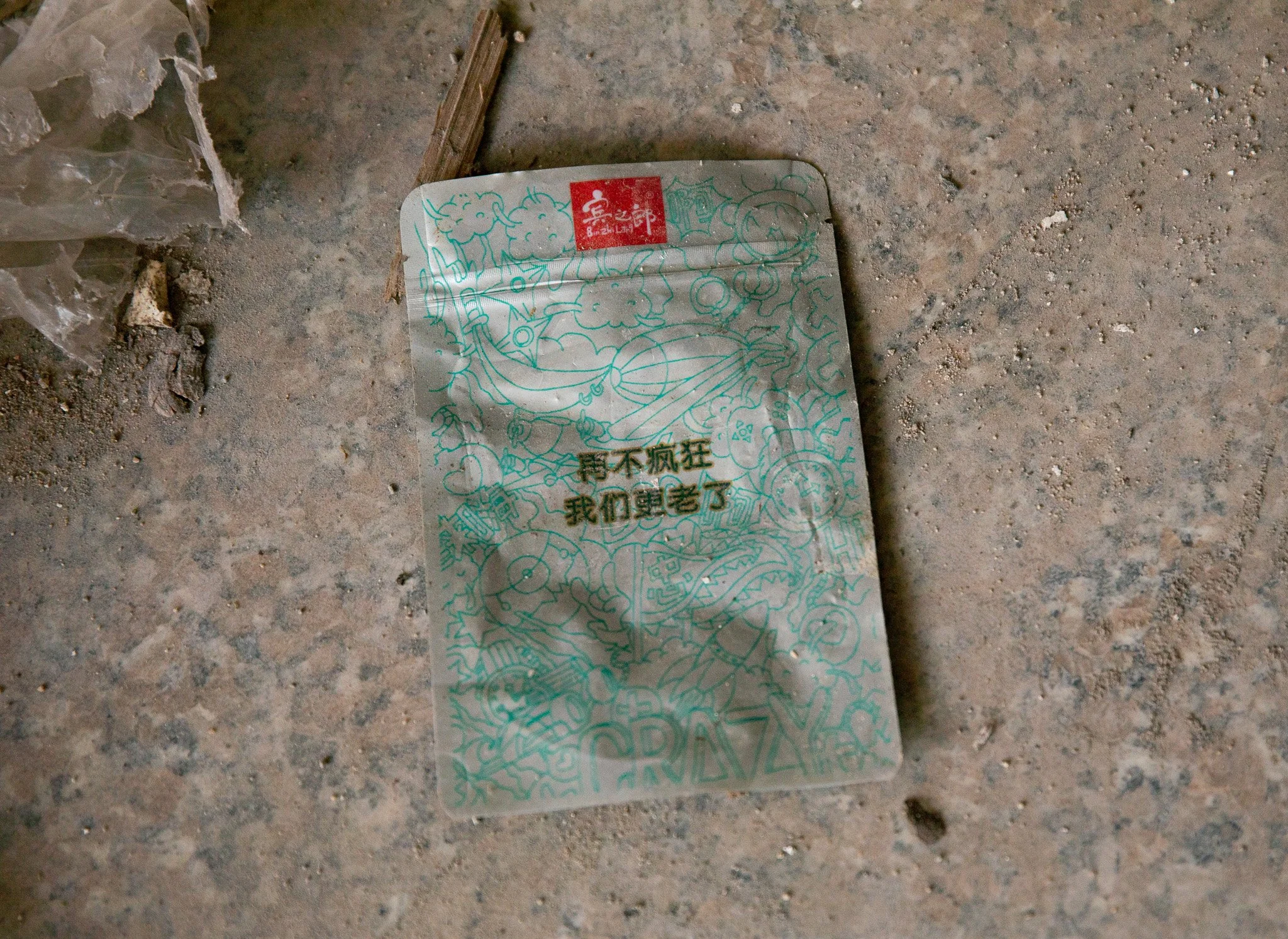Ghost in the Shell
Guangzhou, China, 2019.
In modern China, urbanization has resulted in rapid development, turning old settlements into wealthy and modern urban centers.
The tall buildings behind Xian Cun were the “better and newer homes” the government built for the relocation in Zhujiang New Town. The remaining villagers who refused to relocate still lived inside the demolished buildings, along with the illegal immigrants, and homeless. They put red flags on the building to protest that these were their home, their territories.
I climbed to another abandoned building with friends right next to the entrance. After the demolition, the remaining villagers were highly alert and violent to any strangers wandering through the gate.
Xian Cun, one of the most notorious old villages still visible in Guangzhou's city center today, is shadowed by the high rises of Guangzhou's most modern district Zhujiang New Town. Zhujiang New Town is planned as the city's new Central Business District.
This ancestral hall of Xian Cun had over 258 years of history, but still couldn’t survive through urbanization.
A tree grew through the crack in the floor, flourishing.
And yet, the 2010 Asian Games in Guangzhou has hastened the pace of transformation, putting Xian Cun residents in the line of fire. Despite numerous attempts, an agreement on land development and compensation has never been reached between authorities and the local villagers.
Room 303 and Room 304. I met Grandpa Bai when we were wandering inside the building. I told him I was taking some photos for my project and he took us back to where he lived, Room 305.
Over the past decade, the village has been under violent demolition, with dozens of buildings crumbling into mountains of rubble. Hundreds of villagers who stood up against the authorities were arrested and a long stalemate began.
The room was 120 square feet with one bed, one shelf, one chair, one lightbulb, and one small table. The rent was 300 yuan, less than 50 dollars a month.
He had been living here illegally for two years now. He immigrated to Guangzhou for a better life. He spent half of his government financial aid on rent and cheap food and donated the other half to an impoverished elementary student.
He looked outside to check if there were any other villagers or authorities nearby. This small 120 square foot balcony was his bathroom, laundry room, kitchen, and watch tower.
A wig to disguise himself from the local authorities whenever he left the building.
Some of the remaining residents started to grow their own food on the balcony so they could stay inside without getting arrested. One of the reasons to refuse relocation was that they were too impoverished to afford the rent of a newer home, even with the government allowance.
A shirt was left behind.
A resident leaving his home.
The fan was still brand new when they moved out.
Today, the village is a final testament to the
Xian Cun that once was.
The Chinese character Fu (福) meaning "fortune" was still hanging on the wall during Chinese New Year. I couldn’t stop picturing the family that lived here once before, having a joyful meal on the Chinese New Year.
The package of areca nuts said, “if we don’t go crazy now, we will get old.”
Xian Cun is a ghostly shell of a community. This impoverished neighborhood carries on, struggling for its last breath, yet being forgotten.
A child on his way home as he walked into the ocean of the construction mesh.

























